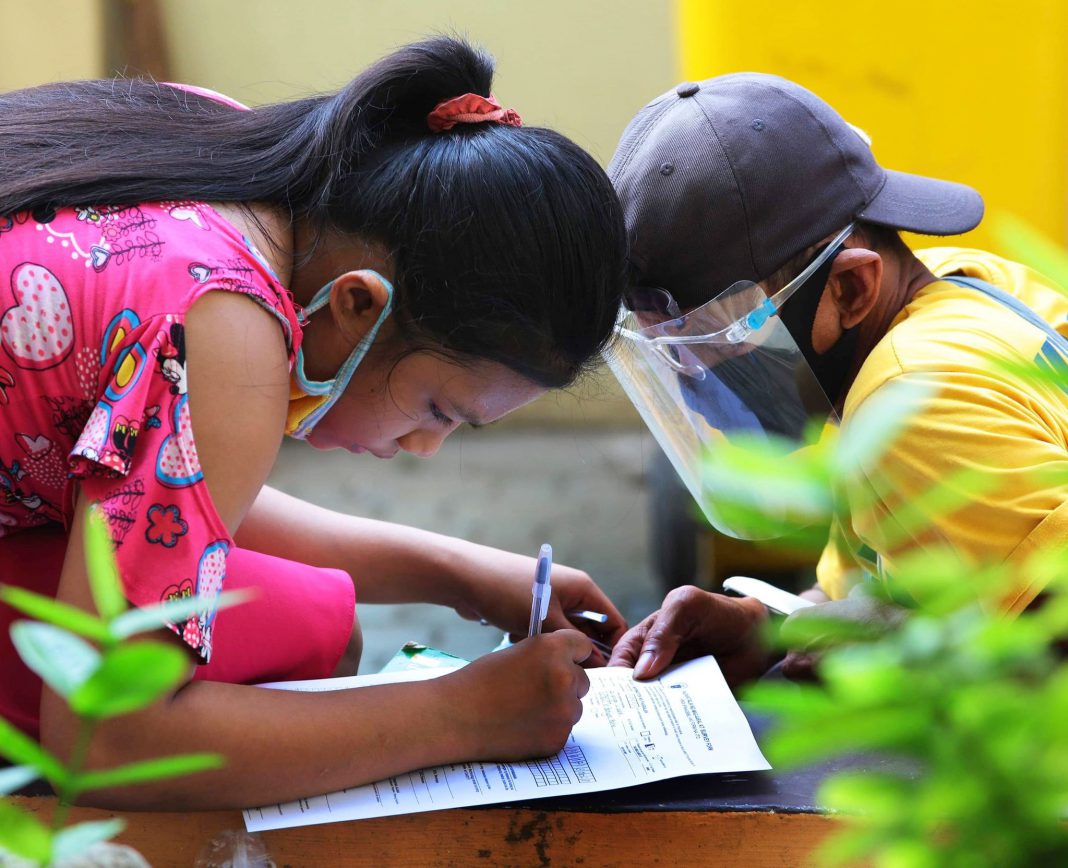A Grade 12 senior high school student, assisted by her father, fills up a late enrollment form, at the Senator Benigno Aquino Elementary School in Baseco, Tondo, Manila
(MFA/NPPA IMAGES)
Did you know? Over 773-million youth and adults globally are deprived of basic literacy and numeracy skills; 2/3 of them are female, according to UNESCO.
The so-called learning poverty or illiteracy among children of low-and-middle-income countries is pegged at 53%; with children unable to read and understand a simple sentence or text by age 10.
In the Philippines, only 19% of 15-year old Filipino students achieved minimum proficiency for Overall Reading Literacy, according to the 2018 Philippines PISA (Programme for International Student Assessment).
Among educators, there is a declining passing rate of elementary teachers in the Licensure Examination for Teachers in 2017 and 2018, averaging only 20% and 22%, respectively.
In the latest Department of Education (DepEd) data, (Sept4, 2020, 8AM posting), the total number of enrollees for SY 2020-2021 has reached 24,199,478 nationwide (both public and private school (87.07% of SY 2019-2020) for Kindergarten to Grade 12, including ALS and non-graded learners with disabilities. This is 3.5 million SHORT of the total enrollees last school year (27.750 million learners) and 15-million less than the total number of school-aged Filipinos (39.2M, PSA-Annual Poverty Indicators Survey 2017). Of the present total enrollees nationwide, only 64,031 are non-graded learners with disabilities and 373,051 enrolled in Alternative Learning Systems.
Why is LITERACY important?
They, who are the learning poor, are those who suffer hunger, poor health and are seasonal earners with low wages. As less informed citizens, they are excluded in decision-making and governance. Studies show that a high literacy rate among citizens helps them fulfill their obligations of responsible citizenship and empowers them to assert and defend their human rights, especially women and children.
The quality of education at school is just one problem. the unresolved problem of “those left behind in education” – such as the out-of-school children, youth and adults (OSCYA), indigenous people, learners with disabilities, Muslim learners, children and youth in conflict and emergency situations, and those in the “last mile school” (far-flung) areas. They are the estimated 3.6 million Filipino out-of-school children and youth (PSA Annual Poverty Indicators Survey, 2017), and based on the World Bank’s May 2018 Philippines Education Note, at least 24 million Filipinos, aged 15 and above, were not able to complete their basic education.
For more details visit: https://www.facebook.com/ENetPhilippines/posts/204136884472260














